SCAN TOOL WORKSHEET AID TO DIAGNOSIS

SCAN TOOL WORKSHEET
VEHICLES AFFECTED: ALL 1988 VEHICLES WITH TBI, PFI OR SFI
The SCAN TOOL WORKSHEET was designed to help organize the data available when diagnosing an E.C.M. equipped vehicle. The form, GMP514, is available at no charge from Dyment Limited and comes in a pad of 50 sheets.
The column, `Key On, Engine Off' should be completed first. Any abnormal conditions detected should be repaired before proceeding to the next column.
Note that MAP or VAC readings will vary slightly due to atmospheric pressure changes (weather changes or geographical location).
The "Idle, Closed Loop" column should be completed after the engine has been run long enough to heat the oxygen sensor to operating temperature.
The three remaining columns are provided for 30 MPH, 50 MPH or 60 MPH data if the nature of the customer's concern dictates a road test. Local speed limits may require the test to be done at 50 MPH or 60 MPH. It is important for purposes of repeatability that road load values be recorded. Road load is defined as driving on level road in the highest gear practical with only enough throttle to maintain vehicle speed. These operating conditions are critical as only small changes of throttle opening or engine load will cause major changes in the data.
Attached are sample sheets for new or revised engines for 1988 vehicles. For carryover engine SCAN values use the sample sheets listed in Product Service Bulletin 87-O-108. These sheets are intended only as an aid in understanding SCAN readings and are not to be considered as vehicle specifications for repair decisions.
NOTE: a) At speeds above 56 MPH with the TPS held steady the system switches to "Lean Highway Mode" and makes use of leaner air/fuel ratios. With the "TECH 1" SCANNER the oxygen sensor typically reads less than 100 mv and the loop status reads closed in this mode. Periodically, the oxygen sensor will vary between 0 and 1000 mv to update the integrator/block learn. The system will also revert to full oxygen sensor variance with changes in TPS (accel. or decel.).
b) The 1988 J car with 2.8L VIN Code W engine uses a MAP sensor not a MAF sensor as in previous years. Therefore, the airflow reading on TECH 1 is an ECM calculation.
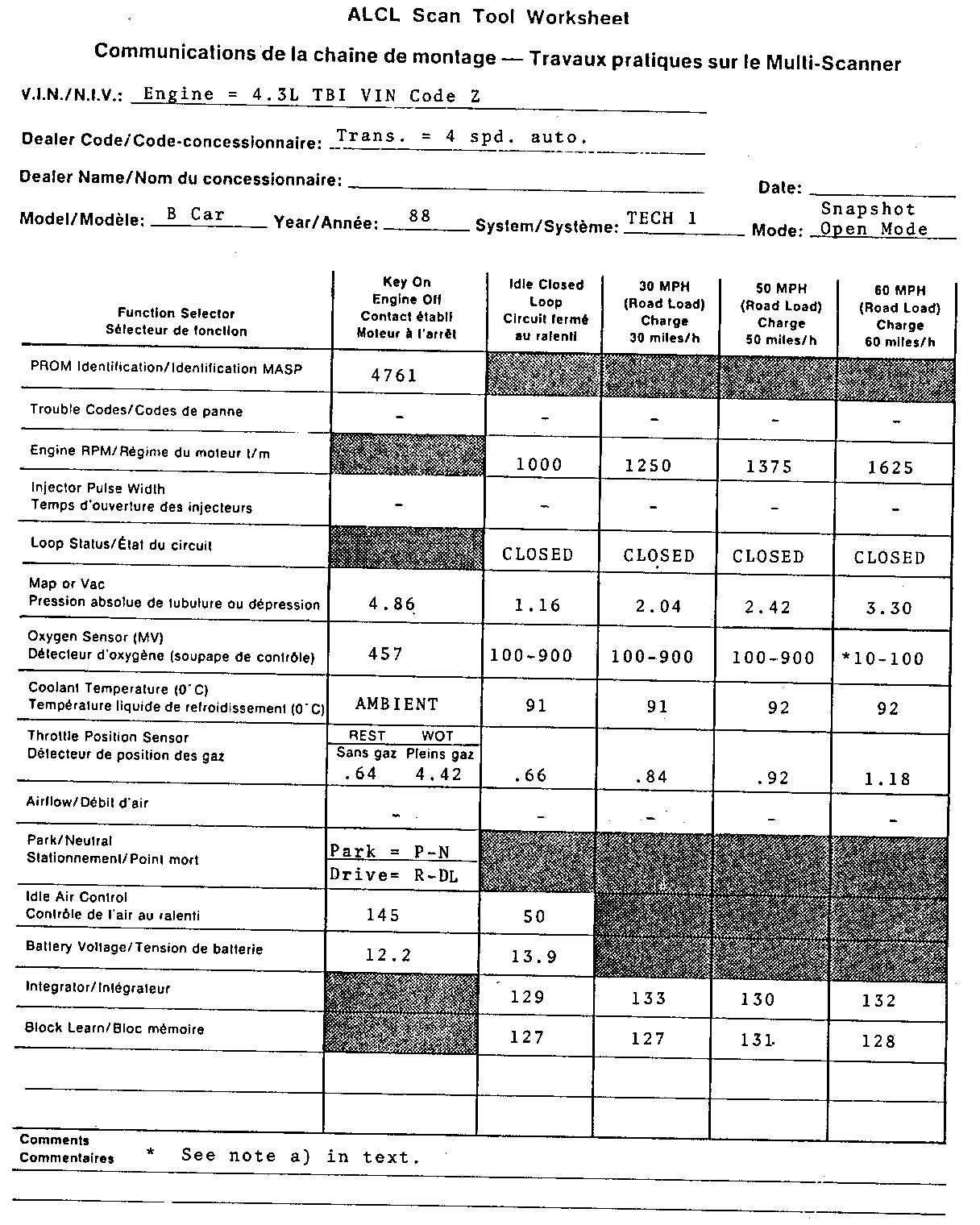
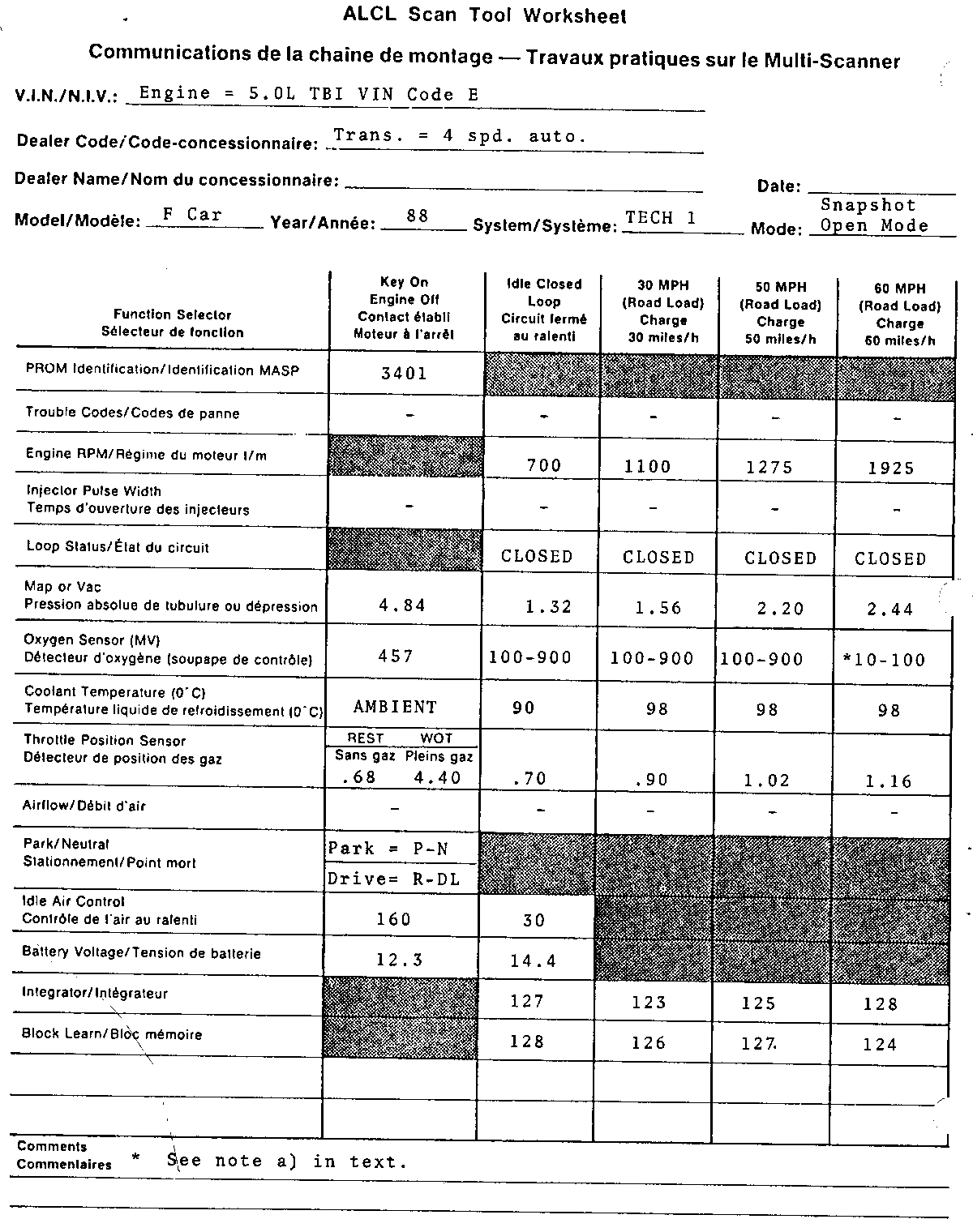
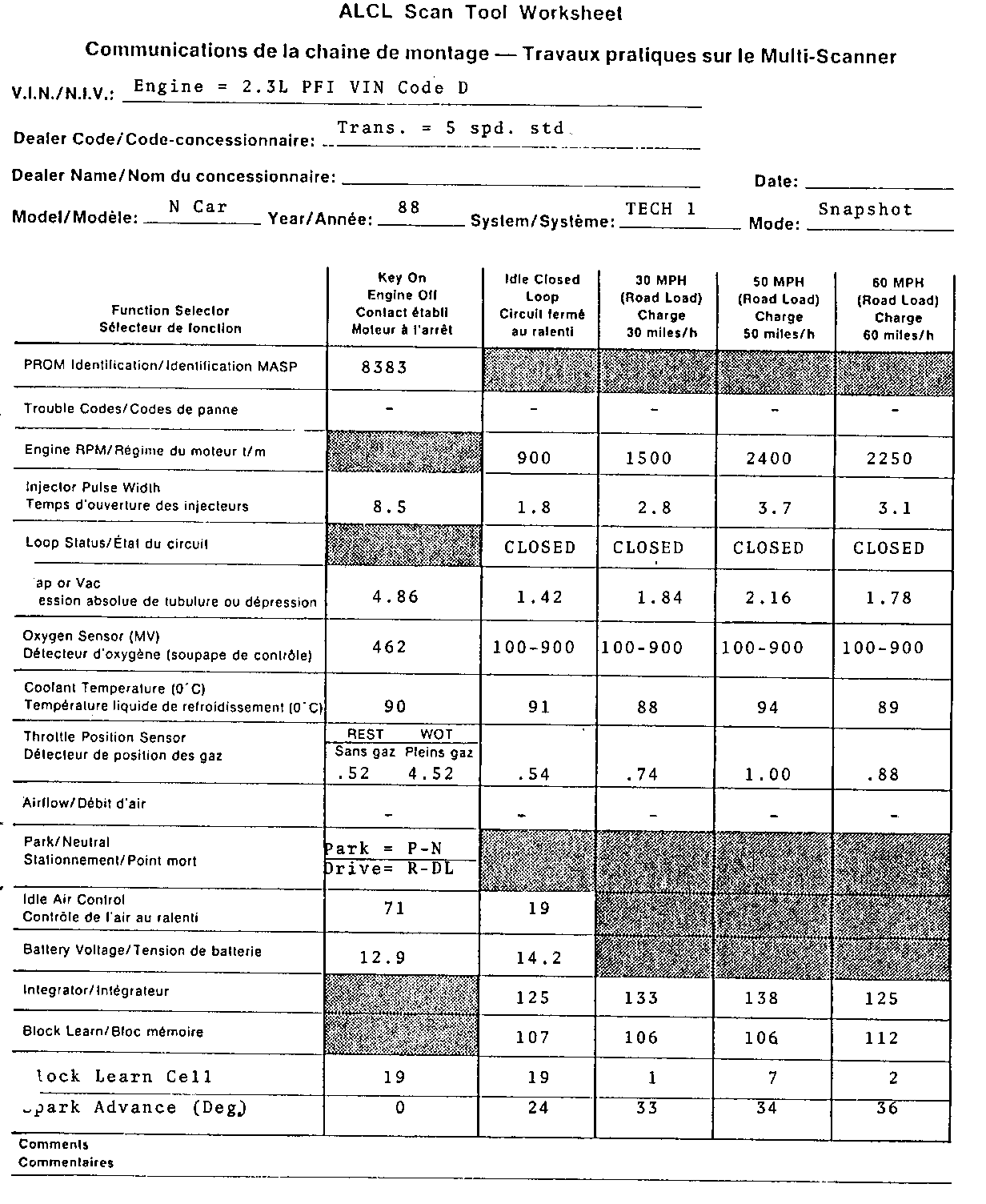

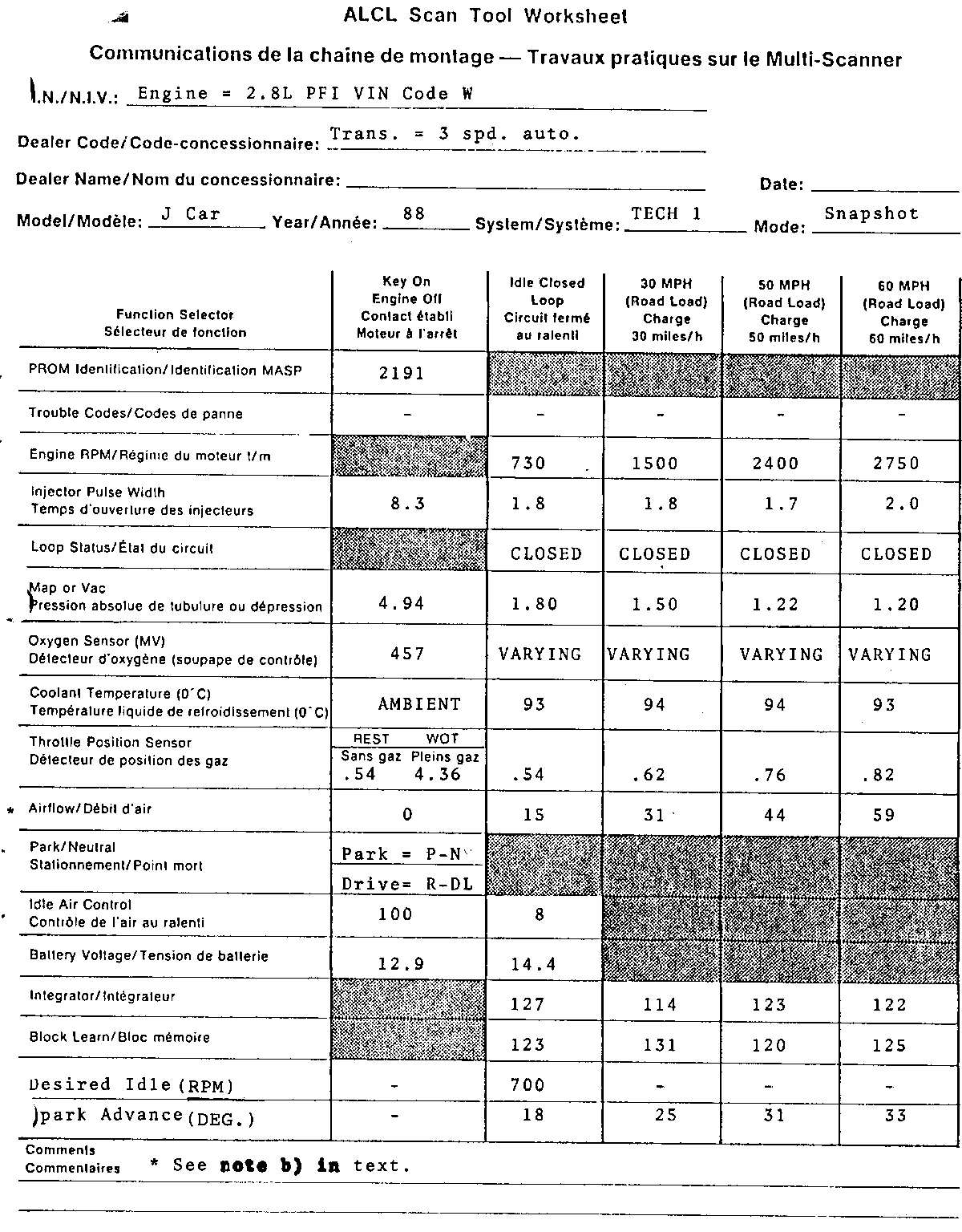
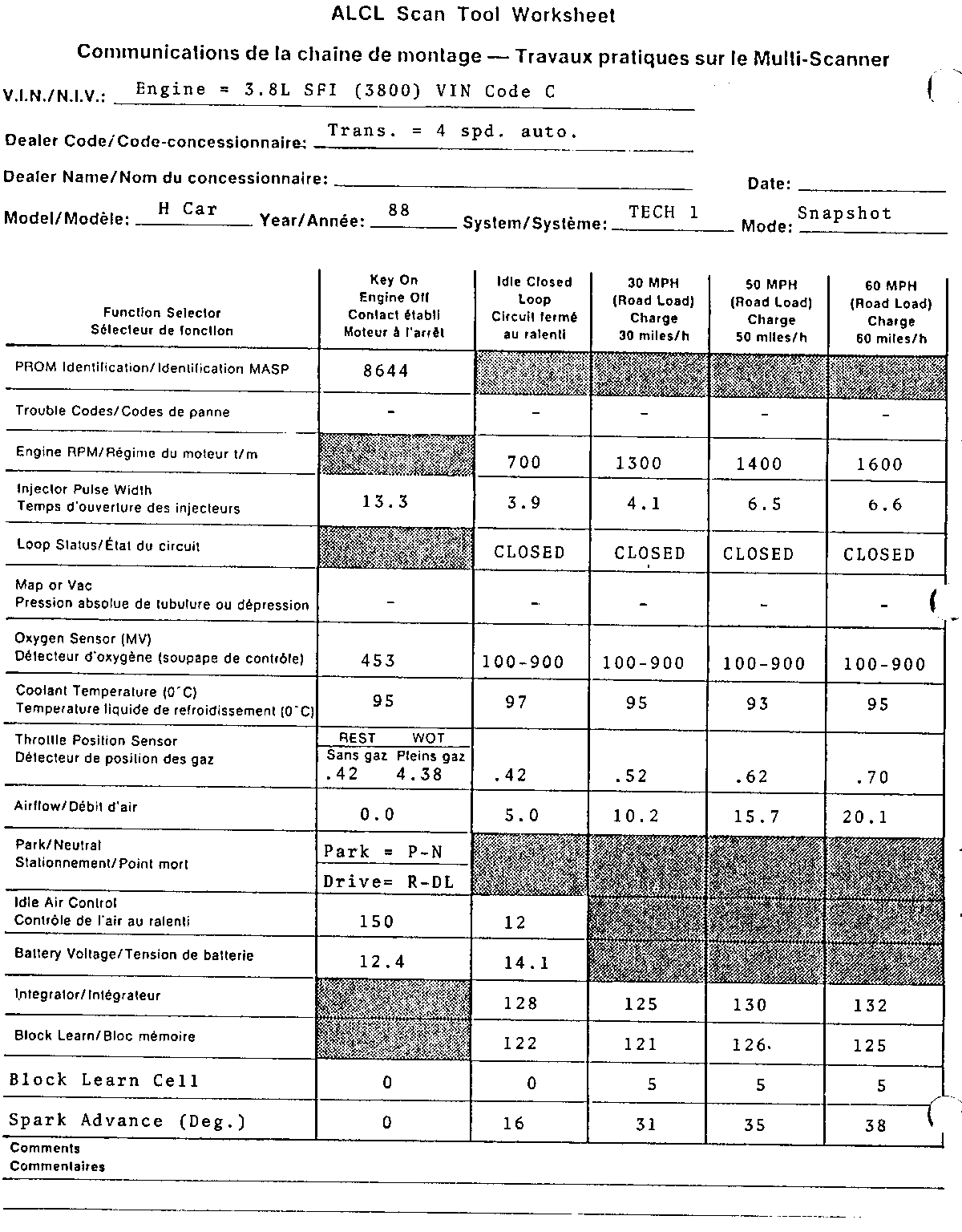
General Motors bulletins are intended for use by professional technicians, not a "do-it-yourselfer". They are written to inform those technicians of conditions that may occur on some vehicles, or to provide information that could assist in the proper service of a vehicle. Properly trained technicians have the equipment, tools, safety instructions and know-how to do a job properly and safely. If a condition is described, do not assume that the bulletin applies to your vehicle, or that your vehicle will have that condition. See a General Motors dealer servicing your brand of General Motors vehicle for information on whether your vehicle may benefit from the information.
